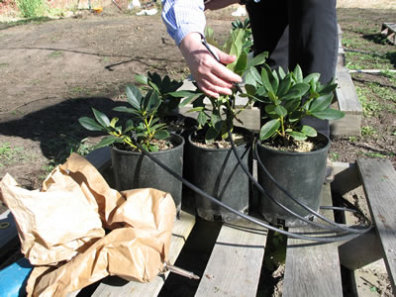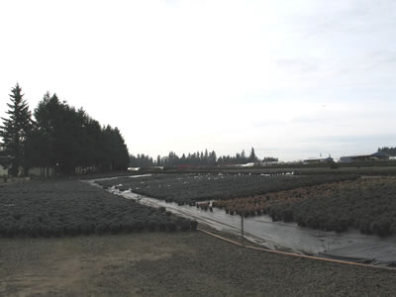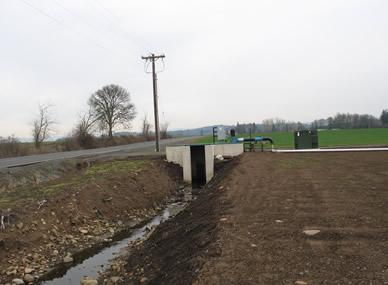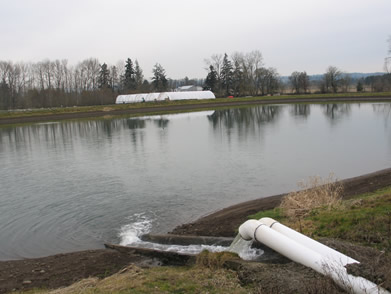WSU Puyallup
Managing Phytophthora diseases in the nursery
Water management photo gallery
| Phytophthora can spread from cull piles where diseased plants are disposed of, especially if the site is muddy with standing water. Spores can be tracked throughout the nursery on vehicle tires and workers shoes.Ensure that runoff from cull piles is directed away from areas such as roads, growing beds, soil components and mixing areas, and especially from areas containing high-risk host plants to prevent contamination by spores. | 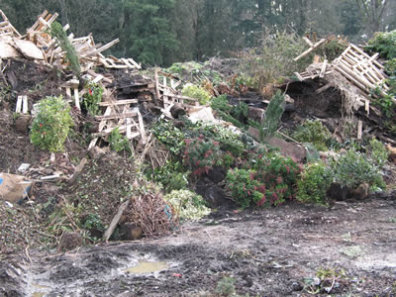 |
| Avoid overhead irrigation. If you use overhead irrigation, ensure that leaf wetness of 12 hr or more is minimized. Irrigate in the morning to allow leaves to dry as soon as possible. | 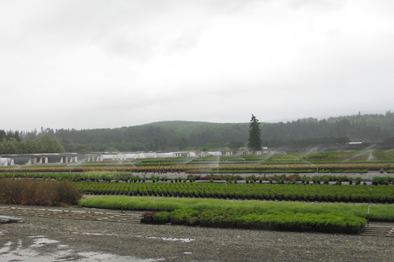 |
| Drip irrigation saves water and reduces the chances of infection. However, if the soil or media stays wet and in contact with the plant, infection may result. | |
| Dirt roads are prone to flooding in the wet climate of the Pacific Northwest.Standing water in roadways is a good environment for Phytophthora and Pythium, whose spores can be spread on vehicle tires. | 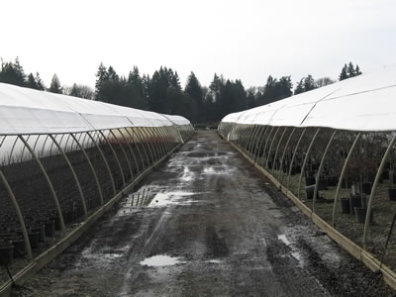 |
| To prevent flooded areas where waterborne diseases can accumulate, a level, graveled road is the best option. | 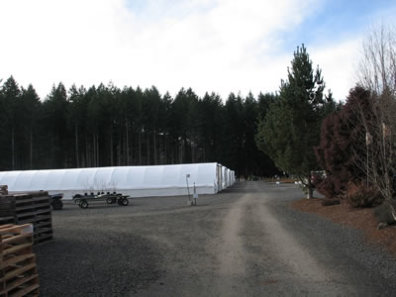 |
| Avoid letting water accumulate under or around blocks of containerized nursery stock. Allowing plants to stand in water increases the chances for Phytophthora root infection. | 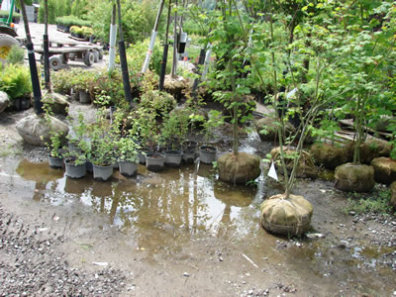 |
| These plants are set out on a sloped area, allowing water to run off rather than accumulate.However, water should be diverted from hillsides populated with P. ramorum host plants since spores move in water. Place these plants at the bottom rather than the top of the slope. | |
| Disease can be spread throughout a nursery in recycled irrigation water.Irrigation water from any source other than well or municipal water should be monitored for P. ramorum if the pathogen is detected in or near the nursery grounds. | |
| Retention ponds should be tested periodically for presence of Phytophthora and Pythium species. It is a good idea to monitor for Phytophthora species in general to reduce damage caused by these diseases. | |
| Water in ponds can be treated with chemicals, such as sodium hypochlorite, to eliminate disease organisms. | 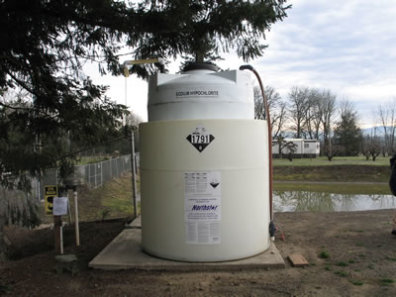 |
| Back to Managing Phytophthora diseases in the nursery |
